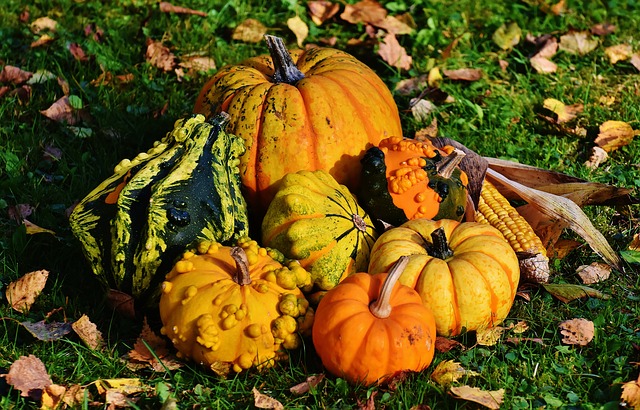How Does Pumpkin Grow? The Science Behind How Pumpkins Grow

The huge growth of a pumpkin vine is made possible by photosynthesis. Pumpkin leaves turn sunlight, water, and carbon dioxide into food for the plant to make more leaves, roots, flowers, and pumpkins. Pumpkin plants grow as vines that can easily reach 20 to 30 feet long throughout a growing season. One hill of pumpkins that looks like Jack-o’-lanterns can cover 50 to 100 square feet by harvest time.
Table of Contents
Growing Observations
Finding space for a full-size pumpkin vine in a typical suburban backyard can be hard. Many gardeners put pumpkin plants along the edges of a vegetable garden and train the vine to grow along the edges of the garden. This works well, but don’t forget to leave openings in your garden, or you’ll have to wade through pumpkin vines to take care of it.
Typically, pumpkins are not considered invasive plants. You could also just let vines grow across your lawn. Mow the grass near the pumpkin vines, but be careful not to hurt the vines, leaves, or pumpkins. As the main vine starts to make its way across the grass, put a three- to four-inch-deep line of compost in the path it will take. The way vines grow is pretty straight so they will meet and follow the compost layer.
Pumpkins are a beloved staple of fall decor and cuisine, but there is a common concern about their potential to catch fire with excessive sunlight. While it is true that pumpkins can dry out and become more flammable in direct sunlight, they are unlikely to combust spontaneously.
As the pumpkin vine grows along this path, it will send new roots into the compost that anchors it to the grass. These extra roots help feed the pumpkins as they grow. When you’re done picking pumpkins, pull up the vines, mow the grass, and rake the compost into the lawn around the pumpkin patch. Replace the seeds where the pumpkin vine went through the compost. The pumpkin vine won’t hurt your lawn much if you do it this way. Next spring, your grass will look as good as new. Don’t you know that pumpkins can also be composted? They are a good source of organic material for composting, as they are high in nitrogen and other nutrients that benefit soil health.
Choose varieties that grow in a semi-bush or bush shape if you don’t want pumpkin vines to eat your grass. These pumpkin plants take up less room and make smaller pumpkins in less time. Some are small, but others grow pumpkins that weigh between 10 and 15 pounds. Most bush and semi-bush pumpkins have more sugar than carving pumpkins, making them a great addition to your kitchen pantry. However, pumpkins can have bumps for various reasons. One possible cause is the presence of viral infections that affect the development of the fruit. Another reason is physical damage or stress during growth, which can lead to abnormal growth patterns. Genetic factors can also play a role in the appearance of pumpkin bumps.
A semi-bush pumpkin plant covers 30 to 35 square feet. Baby Pam, Oz, and Sugar Treat are all semi-bush plants that grow pumpkins that weigh between 2 and 5 pounds. Spirit is a semi-bush type that grows pumpkins that weigh between 8 and 15 pounds. A bush pumpkin grows even smaller. It only needs eight feet of space to grow. One bush pumpkin is called Wee Be Little, and it makes small pumpkins that weigh between half a pound and a pound. Bushkin pumpkins weigh between 8 and 15 pounds each.
The Importance of Sunlight to Pumpkin
Let’s begin with the bright sun. Like many other vegetables, Pumpkins get most of their nutrition from the sun. They will benefit from having access to as much sunlight as you can provide. The sun is the primary source of energy for pumpkin production. The leaves convert sunlight into the plant’s internal food supply, then are transported to the vines and pumpkins growing. More sun yields more pumpkins and bigger pumpkins. Plant your pumpkins where they will get at least six hours of direct sunlight per day, preferably one that is not shaded.
The sun is essential for many reasons, including that it helps keep the leaves dry. When the sun hits the leaves in the wee morning hours, the dew quickly evaporates. The longer the leaves of a pumpkin vine are exposed to the sun later in the day, the longer they can avoid becoming wet. What are the benefits of having dry leaves? The leaves of pumpkins are susceptible to several fungal diseases, which can quickly spread when the leaves are damp. Leaves will fall off, and the pumpkins will not grow to their full potential if the fungal diseases become severe.
